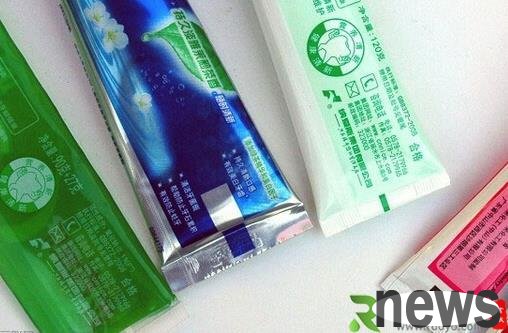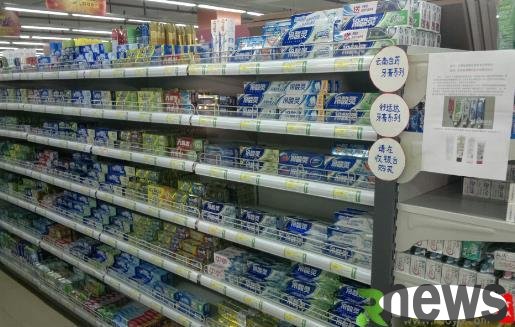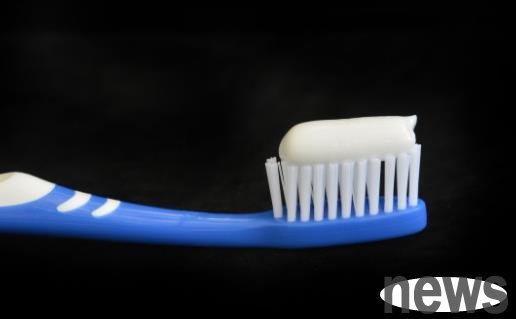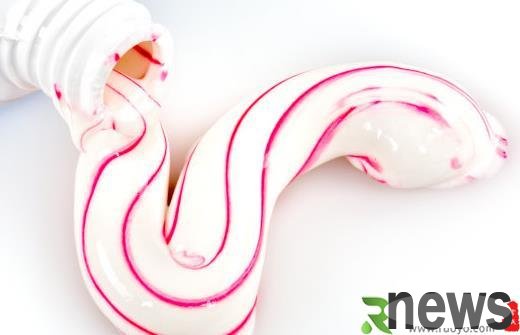The bottom of each toothpaste tube is a color bar, and I believe many people are not very clear about its purpose. It is circulated online that the color bars at the bottom of the toothpaste represent some chemical ingredients, which has caused concern to many people, especially some parents. Let’s learn more about it with the editor below!

In fact, the color bar at the bottom of the toothpaste does not indicate chemical composition, but is just a mark made by the company to distinguish the purpose of the toothpaste. The tail of the toothpaste tube of many brands of toothpaste is in four colors. Red is basically a toothpaste for children, not as mentioned on the Internet, red is a natural + chemical component; blue is mainly whitening, and whitening additives are mainly added to it; black is not whitening, and removes tooth stains; green is mainly drug-related.
Therefore, the color bar at the bottom of the toothpaste is only a corporate behavior. The company itself uses a color to distinguish its different products. It is based on the quality and purpose of the toothpaste. It is not a mandatory requirement of the country, and there are no regulations in the industry. For example, after buying toothpaste, a consumer may say that there is a problem with the toothpaste, and then say what color the end of the toothpaste tube is. In this way, as the party who answers the phone or the party who consults, you can quickly understand what kind of toothpaste you may buy.
All toothpastes actually have chemical ingredients. When purchasing, consumers still need to look at the instructions on the toothpaste. For example, children's toothpaste will be marked as children's toothpaste. There are regulations for the toothpaste used by children. For example, the requirements for fluorine content are also different, and the fluorine content is lower, in order to protect children's teeth. It is better to buy it according to the condition of your teeth, especially if it is therapeutic, under the guidance of a doctor. The short lines at the bottom of the toothpaste tube are divided into 4 colors (green, blue, red, and black), and these colored short lines represent different meanings.
Green: Pure natural ingredients;
Blue: Natural + drug ingredients;
Red: Natural + chemical ingredients;
Black: Pure chemical ingredients;
Many toothpastes in supermarkets, including children's toothpaste, are many of them chemical ingredients, so everyone should try to choose toothpastes with green or blue short-term trends in the future, because this is related to the health of us and our family.

The color bars on the back of the toothpaste packaging are commonly used include red, blue, green and black.
Professional name: Hose tail cutting cursor
Main purpose: Tracking and cutting pipes
Toothpaste is produced in rolled materials, and the whole roll of materials needs to be processed into single-item hoses. Now the latest processing equipment is fully automatic cutting. During the cutting process, the machinery and equipment rely on the automatic tracking of the electric eye. Every time a cursor is traced, it will be automatically cut. The existing equipment cuts 120~200 pipes per minute. If there is no such cursor, the machine will cut randomly without standards, causing problems of different lengths (this cursor will be cut off after the toothpaste is installed and sealed, and some will be left).
Main purpose: Ensure that the printing layout is centered when sealing the tail
Toothpaste is made into hoses, poured into the toothpaste body on the assembly line, and entered the final packaging process. The tube is round at this time. If there is no positioning, the hose will have no standards for sealing the tail, causing confusion in the layout. After printing this cursor on the layout, when the electric eye on the assembly line senses the cursor, it will rotate and position, and then completes the automatic packaging in the next step, ensure that the position of the entire batch of product packaging is consistent. The purpose of the color mark at the tail of the toothpaste hose: The color mark at the bottom of the toothpaste hose is mainly used for positioning and identification when filling and sealing the toothpaste. It is called the electric eye positioning point in the industry. Electric eye positioning points are very common in hose packaging and are widely used in hose packaging products, such as cosmetics, food, etc. Used for positioning sensing of the tail sealer after the product is automatically filled to ensure that the packaging is in the correct position when the tail seal is sealed.
Selection of color marks at the tail of toothpaste hose:
The color marks at the tail of toothpaste hose depend on the packaging design of the toothpaste hose. Generally, the color that is already available on the hose and is significantly different from the background color. The color that is easy to sense by the equipment has nothing to do with the composition of the product.
Ingredients of toothpaste: Toothpaste consists of multiple ingredients, and the ingredients of each toothpaste will be slightly different. Consumers can learn about the specific additive ingredients of toothpaste through the ingredient list of toothpaste packaging. Toothpaste does not have pure natural or pure chemical classifications. The raw materials used only meet the "Raw Materials Specifications for Toothpaste". In fact, there is no need to deliberately pursue pure nature, because chemical ingredients are widely present in our daily necessities, such as hypochlorite added to tap water, preservatives added to food, flavors, and many other chemical ingredients.

How to choose toothpaste
Brushing teeth is a must-do for everyone every day. Of course, toothpaste must be indispensable when brushing teeth. There are many varieties of toothpaste in supermarkets. The editor will teach you how to choose toothpaste?
1. When choosing toothpaste, don’t look at the name, but the ingredients.
Select the appropriate toothpaste according to the condition of your personal teeth. If the teeth are yellow, choose &ldquoise "organosilicon" ingredients; if the teeth are allergic, choose &ldquoise "strontium chloride" or &ldquoise "potassium nitrate"; to prevent tooth decay, choose &ldquoise "fluorine" ingredients; to prevent tartar, choose &ldquoise "pyrophosphate" or &ldquoise "zinc citrate" ingredients.
2. Look at the color short-term color at the bottom of the toothpaste.
We can take a look. There is a short colored line at the bottom of the toothpaste we use. It is divided into 4 colors (green, blue, red, and black). The meanings of these colored short-term lines are different: green: pure natural ingredients; blue: natural + drug ingredients; red: natural + chemical ingredients; black: pure chemical ingredients; many toothpastes in supermarkets, including children's toothpaste, are many of them chemical ingredients, so everyone should try to choose green or blue short-term toothpaste in the future, because this is related to the health of us and our family.

3. Look at the brand.
When choosing toothpaste, we try our best to choose big brands of toothpastes, and don’t choose toothpastes that we have never heard of or just launched, because big brands of toothpastes have been "run-in" for many years. If they don’t work, they will have been eliminated long ago.
Note: 1. For teeth yellowing, look for “ silicone”
2. For tooth decay, look for “ fluorine”
3. For teeth sensitive, look for “ strontium chloride” or “ potassium nitrate”
4. For tartar prevention, look for “ pyrophosphate” or “ zinc citrate”